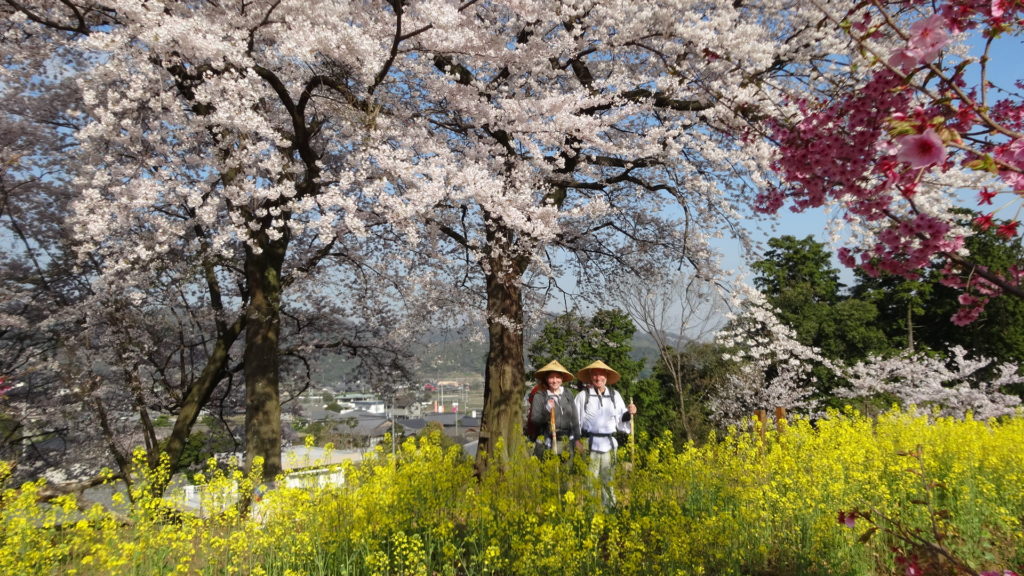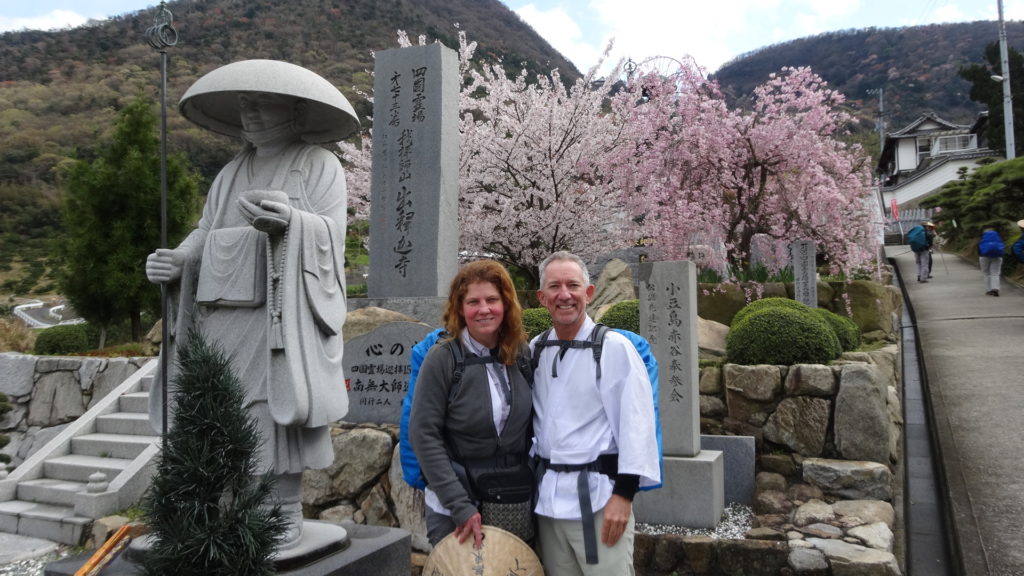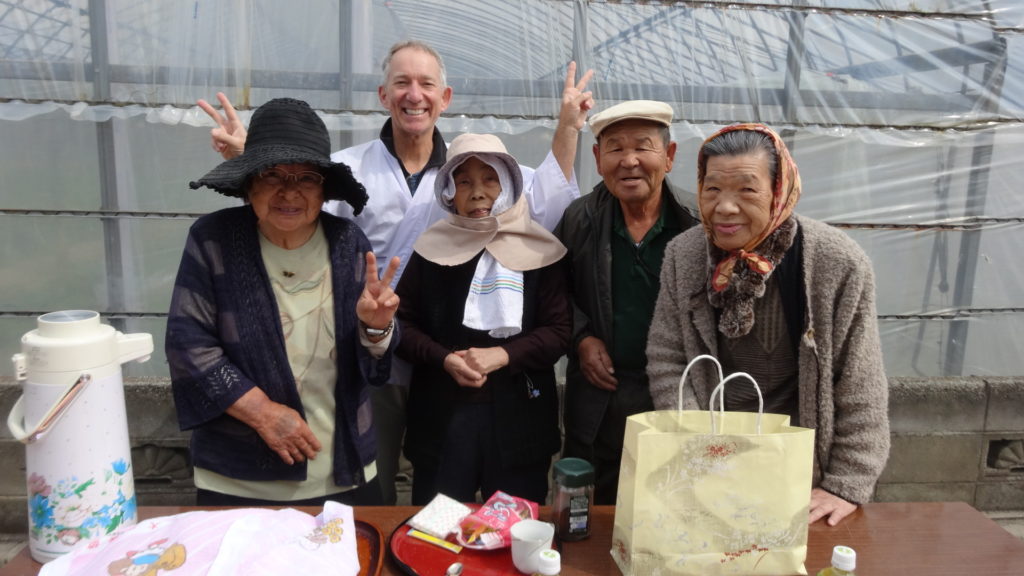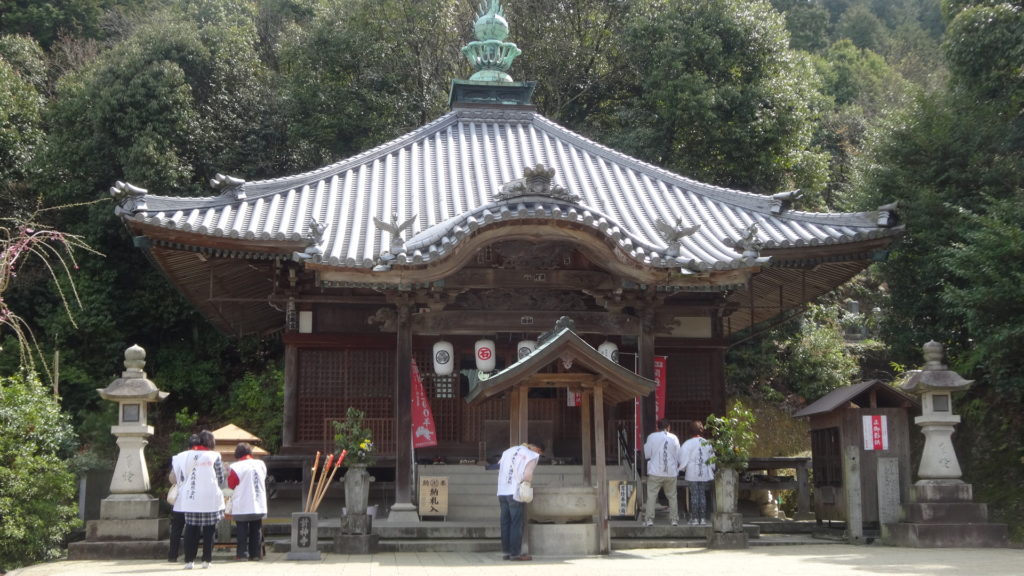How to Walk the 88 Temples Pilgrimage in Japan
This is part of my new interview series, designed to demonstrate the wildly varied ways we can live, work, and chase our dreams. Please keep in mind that, since these are interviews, the opinions, methods, and websites contained within do not necessarily reflect my own views or experiences. (Which is, in my opinion, part of what makes them wonderful.)
Tell us about you two and the adventure you’re on.
We are Molly Stacy and Greg Winker from Seattle, two tax accountants who walked away from our careers in 2013 to travel the world. We went all in with our plans and sold our house, cars, and furniture.
What is the 88 temples pilgrimage in Japan and how did you decide you wanted to do it?
The Shikoku Pilgrimage is the most famous pilgrimage in Japan. It is made up of 88 Buddhist temples scattered around Shikoku Island, the smallest of Japan’s four main islands. Pilgrims are said to follow in the footsteps of Kobo Daishi, the person credited with starting the pilgrimage in the ninth century. It is said that by visiting some or all of these temples, especially on foot, your worldly desires will gradually dissipate and reduce the frustrations of everyday life as you become fully aware of your true self.
The pilgrimage is about 1,200 kilometers (745 miles) and circles the island. Since the route is a loop, there is no official starting point, although many people choose to begin at Ryozenji (also known as Temple One). Your pilgrimage is complete when you have closed the circle and returned to where you started. And if 745 miles is not long enough for you, there are variations that add more temples and an extra 200 kilometers (125 miles).
And you can always do it more than once. We met someone who had made the pilgrimage over 200 times.
We first heard of this pilgrimage five months earlier when we were walking the Camino de Santiago in Spain. The Camino was a life-changing experience for us and we started to think about where our next walk would take us. We had always wanted to visit Japan and this seemed like the right way to do it.

How long did the pilgrimage take and did you do the whole thing on foot?
Around 250,000 people per year make this pilgrimage, but only about 1% of them walk. The rest either make the pilgrimage by car or join a group and go by tour bus. We spent 60 days on our pilgrimage and, overall, we probably walked about 95% of the way. (There were a few days of really heavy rain and we decided to stay dry and take the train.)
What did you do to prepare for the pilgrimage?
I’m a little bit embarrassed to admit this, but all we did was buy a guidebook and an airline ticket. We didn’t learn any Japanese, didn’t study social customs, didn’t do any practice hikes. Well…unless you count the Camino de Santiago. We felt like we were in pretty good shape and knew exactly what we should carry in our backpacks. So we figured we would just show up, start walking, and see what happened.

Anything you wish you’d done differently?
If you want to do this, there are some things you need to know about Japan. Your cell phone isn’t going to work and you can’t get a SIM card that will make it work. You need to rent one when you get to the airport in Japan. We borrowed one from a Japanese friend who we could call just in case. It was our safety net if we needed assistance. We only used it twice, but having it gave us a lot more confidence to be on our own. You can also access wi-fi at several of the convenience stores, but you need to set up an account and access it through an app. Do your research before you leave home. We didn’t. It took us two weeks of trying and one very friendly Japanese man before we got it to work.
How were you able to finance the trip?
We had a two-year plan in place before we quit our jobs. We used that time to save up some funds so we could travel for a few years. On this trip, our budget allowed us to stay in small country inns most nights. These were the typical family-run Japanese inns with tatami mats and futons, communal shower and bathtub. They also served dinner and breakfast. It was a very Japanese experience.
That said, there are more budget friendly ways of making the pilgrimage. We met many people who were camping, most temples have places where pilgrims can sleep at no cost, and many locals open their doors for pilgrims to spend the night. You can ask at temples if they have a place for pilgrims to stay or if any villagers host pilgrims in their zenkonyado.

What was the biggest challenge of the pilgrimage?
We were surprised at how easy it was to walk around rural Japan. Even though no one spoke English and we didn’t always know where we were going, we rarely got lost. A few times we had problems finding our inn at the end of the day, but there was always somebody nearby who was happy to help us. If there was a challenge, it was getting motivated to deal with the rain. It rained a lot. And you knew your rain gear was only going to keep you dry for so long. It was always a challenge to be upbeat about the prospect of being wet, cold, and miserable for most of the day. Still (Greg says), the worst day on the pilgrimage was better than the best day of work at my old job.
What were its greatest joys?
Without a doubt, our greatest joys on the pilgrimage were our interactions with the locals. For the residents of Shikoku Island, this pilgrimage is a big deal. A really big deal. Many, many of then have already made the journey, many more will go later in life. Even though we spent two months immersed in the pilgrimage, we still don’t think we understood how important it is to the people of Shikoku Island.
Out of the 250,000 annual pilgrims, maybe one or two hundred are foreigners. To be a foreign-walking pilgrim is nearly unheard of. Everyone wanted to know where we were from, why we were there, why we were doing this. They wanted to interview us for national tv. Now we know what it feels like to be a rock star.
To pay their respects to the pilgrims, many Japanese will give you gifts to help you with your journey. By giving, they participate in your pilgrimage, which is the next best thing to making their own pilgrimage. The gift receiving was always unexpected, but the real gift was the five or ten minutes we would spend together trying to communicate. Lots of smiling, lots of bowing, and several photographs to remember our brief time together.

How did that experience change your lives (if it did)?
When we first started researching the pilgrimage, Japan was a very foreign place. We were actually a bit nervous going somewhere we would not be able to communicate and we may not be able to find our way around. But as so often happens, the goodness of people shines through, puts you at ease, and makes for an enjoyable and memorable trip. We now have the confidence to go anywhere and try anything.
Any tips for those who want to do a pilgrimage of their own?
Don’t over-prepare. Don’t over-plan. Just figure out how to get to the beginning and start walking. That may sound a little bit crazy, but trust us, it works. Give yourself plenty of time, so you don’t have to push your body. Your feet will thank you. You will meet people you want to spend time with. You will see things that you want to explore. You will get blisters and need to rest. You will create memories and friendships that will last your lifetime. Give it a try. We love it.

What other adventures have you been on during your big trip?
We have been slowly traveling the world since we quit work. Our first trip was four months in the Caribbean, mostly housesitting on Bequia Island in St. Vincent and the Grenadines. Then we walked the Camino (followed by a month in Lisbon, Madeira, and Paris), walked the Shikoku (followed by a month in Hiroshima, Kyoto, and Tokyo), traveled to Brazil for an Amazon River expedition, housesat in San Francisco for a couple of months, and spent a lot of time in the U.S. visiting with family and friends.
What’s next for you guys?
We have been curious about the Silk Road for years. The long history of trade and cultural interaction is fascinating. It’s mind-blowing when you realize the Silk Road impacted the empires of the Greeks, the Romans, the Persians, the Mongols, the Byzantine, and the Chinese (in fact, several different Chinese empires). Our next big trip will be to explore the Silk Road, starting in Istanbul and traveling through Iran, Central Asia, and Mongolia before finishing in Beijing. From there, we will head to Tibet and Bhutan before we end our trip in Nepal.
This is going to be a really exciting trip. Even for a couple of full-time travelers, it’s hard to believe we have the opportunity to make a journey like this. In all, we expect to take around five months and cover over 10,000 miles. That’s almost halfway around the world. Like Marco Polo, who spent 20 years on his travels to the Far East, we want to take our time and really get a feel for the places we travel through.
Comments
-
-
Andi Hill
Hey- Did they book accomodation with a company or do it themselves?
Andi -
Chris Bellos
Feb. 10, 2018
Hello, how long can you stay to do the pilgrimage, and what documents do you need
-
kiran shetty
vey interesting and inspiring article. Especially to read that its ok not to have planned and prepared as thats my status quo having decided to do the Shikoku 15 March on a stroke of inspiration and an inner summoning. Im dedicating it to a Peace Walk which should keep me motivated. A friend will travel 2 weeks with me thereafter I’m on my own so lets see how i cope!
I believe its nicer to have a companion to travel with for sure. I did the Camino with a friend and at the end i was thankful she was with me. I travelled solo for a day but faced this niggling anxiety of sorts which vanished as soon as i reached the rest house and met up with my friend again. -
Justine
Love your post. I plan to visit Shikoku Island in May. The flight from LA to Tokyo is booked. It’s probably better to fly to Tokushima from Tokyo as a train or bus ride may not be feasible. I am worried about lodging (and being able to take daily showers) during my pilgrimage as I do not speak Japanese at all. Do you know if there is a website one can use to map out the overnight stays at different locations before the pilgrimage begins? Many thanks.

lee laurino
wonderful post. i keep trying to ask the world travelers who post on line how ‘different would your trip be if you went SOLO’ but i never get an answer.
so i shall go and try it myself….am off to Japan in September, I may not do the 88 temples but I will understand Kyoto more after 2 weeks.
Thanks Gigi